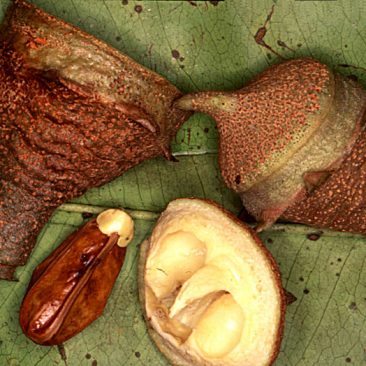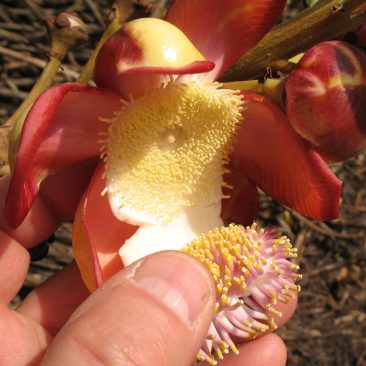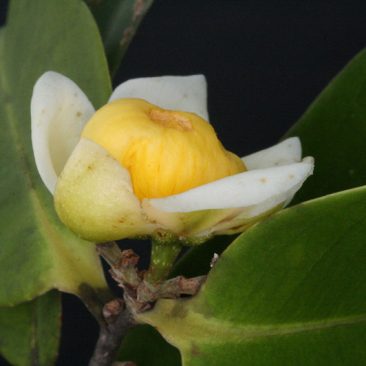Lecythidaceae – the Brazil nut family
by Scott A. Mori, Nathan P. Smith, X. Cornejo and Ghillean T. Prance
Neotropical Lecythidaceae are among the most spectacular plants in the world because of their showy flowers and large woody fruits. They are also ecologically dominant species in Amazonian forests, for example, Steege et al. (2006) show that Lecythidaceae are the third most abundant family as calculated from a sample of 277,069 trees from across Amazonia and that Eschweilera, the genus with the most species in Lecythidaceae, is represented by more trees than is any other genus of plants in Amazonia. Lecythidaceae are found as far north as Mexico and as far south as Paraguay, but are not nearly as abundant or species rich as in the Amazon.
Species of the family possess numerous flower and fruit features that reflect adaptations for pollination and dispersal. Although all tropical plant families have such adaptations, they are especially easy to identify in this family because of the large size of the flowers and fruits and adaptations for pollination by bees and bats and dispersal by animals, the wind, and water are easily seen.
The long-term goal of this website is to provide in a single location all of the information that we and our collaborators have accumulated on the taxonomy and biology of the Brazil nut family. We will include keys to species (not yet available), web pages for the Neotropical species (all names and synonyms are in the database but all fields in the records are not yet populated), and copies of papers that have been written about the systematics, economic botany, habitats, pollination, dispersal biology, anatomy and morphology, and molecular biology of the family. One molecular study by Morton et al. (1997) has already been published and others are in progress and will be added to this site as they are published.
Knowing the names of things is said to be the first step in acquiring knowledge, and this is especially true for learning about and understanding the ecology and evolution of the living world. For example, as the names of species of the Brazil nut family become known, and information is made available about how to identify these species, more in depth studies about their distribution, pollination, dispersal, habitat preferences, and their relationships with other species such as predators become possible. Such information can then lead to an understanding of biological processes and to the designing of conservation plans for protecting Lecythidaceae and all of the other species of plants and animals that share its habitats.
All those interested in the protection of plant and animal species are, or should be, aware of the importance of systematic botany in conservation. Thus, the primary reason for this web site is to make it possible for others to know the names of species of the Brazil nut family and to learn how we and others have used this information to learn about their biological relationships. We are particularly interested in helping both governmental and non-governmental agencies to set aside forests to protect the diversity of this and other families of trees because all other organisms the forest depend upon the trees for their survival.
In summary, this web site has been developed to:
1. ensure that the information (including images), that we have collected about Lecythidaceae is passed on to current and future botanists,
2. provide easy access to difficult to find literature,
3. increase real time collaboration between us and botanist in areas where Lecythidaceae are found,
4. make data available for conservation, especially in the form of distribution maps for each species,
5. educate others about Neotropical plants, and
6. increase appreciation for the diversity and ecological relationships of tropical plants.


